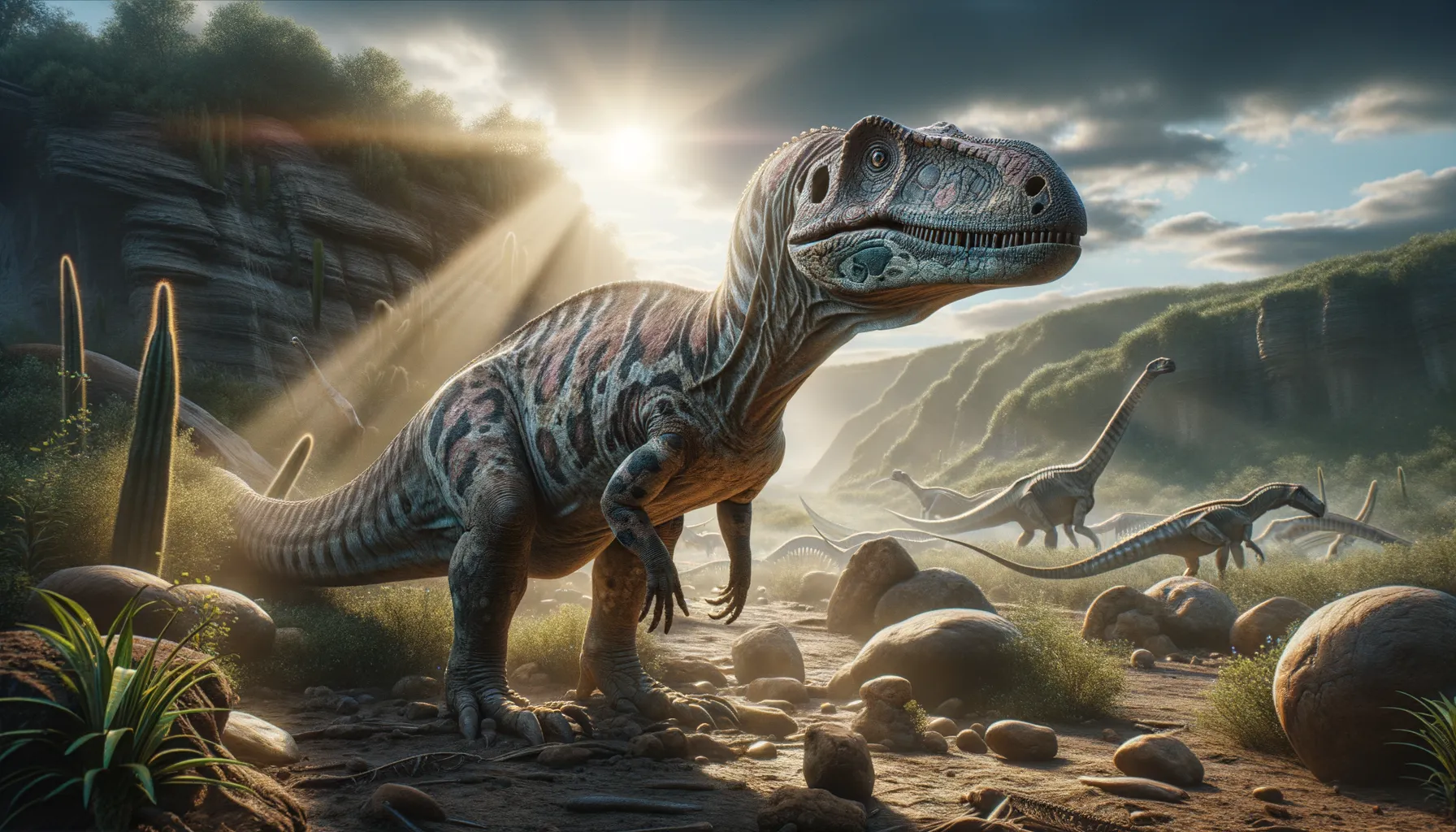
Bathygnathus
An ancient link to modern mammals.
Period
Permian
Length
Approximately 3 to 4 meters long.
Height
Roughly 1.5 meters tall at the hip.
Weight
Estimated to be around 150 kilograms.
Bathygnathus is an early therapsid, originally thought to be a dinosaur, discovered on Prince Edward Island in Canada. It provides important insights into the evolutionary transition leading to mammals. With its robust body and characteristic skull features, Bathygnathus represents a critical link in understanding prehistoric life. Once thought to be a type of dinosaur, further studies reclassified it as part of the reptilian lineage that eventually gave rise to mammals, showcasing the complex evolutionary history of reptiles.
Diet
Bathygnathus was likely a carnivore. It would have preyed on smaller animals and possibly scavenge for food.
Hunting
As a medium-sized carnivore, Bathygnathus likely employed stealth and ambush tactics to catch its prey. Its strong jaws and teeth suggest it was well-equipped for dealing with struggling prey.
Environmental challenges
During the Permian period, Bathygnathus faced a dynamic environment with shifting climates and landscapes. Changes in vegetation and available prey would have posed challenges. Additionally, evolving competition with other species required adaptability for survival.
Speed
Moderate, likely comparable to modern reptiles.
Lifespan
Unknown, but likely similar to other early reptiles.
First discovery
Discovered in the mid-19th century in Prince Edward Island, Canada.
Fun Facts
- Bathygnathus is one of the earliest known synapsids, a group that eventually led to mammals.
- It was discovered on Prince Edward Island in Canada in the mid-1800s.
- The fossils found of Bathygnathus include mainly jawbones, which helped scientists identify it.
- Bathygnathus lived during the Early Permian period, roughly 290 million years ago.
- Originally thought to be a dinosaur, Bathygnathus was later recognized as a more primitive relative.
- The name Bathygnathus means 'deep jaw', referring to the shape of its jawbone fossils.
- Bathygnathus provides important clues about early terrestrial vertebrate evolution before the age of dinosaurs.
Growth and Development
The growth of Bathygnathus was likely steady, with juveniles showing distinct skeletal features that gradually changed with age. These changes reflect the developmental patterns seen in other therapsids, offering insights into the evolutionary growth mechanisms.
Habitat
Bathygnathus inhabited ancient forested regions with access to abundant water sources. These areas were rich in biodiversity, providing a range of ecological niches. The habitat would have facilitated its carnivorous lifestyle with ample prey availability.
Interaction with other species
Bathygnathus interacted with numerous other species, likely competing with similar carnivores for food resources. It may have also coexisted with early herbivorous therapsids, impacting its dietary opportunities. These interactions shaped its survival strategies.
Natural lifespan
Bathygnathus likely had a lifespan typical of therapsids at the time.
Reproduction
Bathygnathus likely reproduced through eggs, similar to other reptilian ancestors. Its mating rituals and care for offspring remain speculative, but its reproductive strategy would have ensured the survival of subsequent generations.
Social behaviour
There is little evidence to suggest Bathygnathus was particularly social; however, it might have exhibited some territorial behaviors typical of carnivores. Its interactions would have been driven by food and reproduction.
Fossil locations
Fossils of Bathygnathus have been predominantly found in Prince Edward Island, Canada. The initial discovery led to significant reclassification in understanding prehistoric life in the region. These finds underscore the area's rich paleontological significance.
